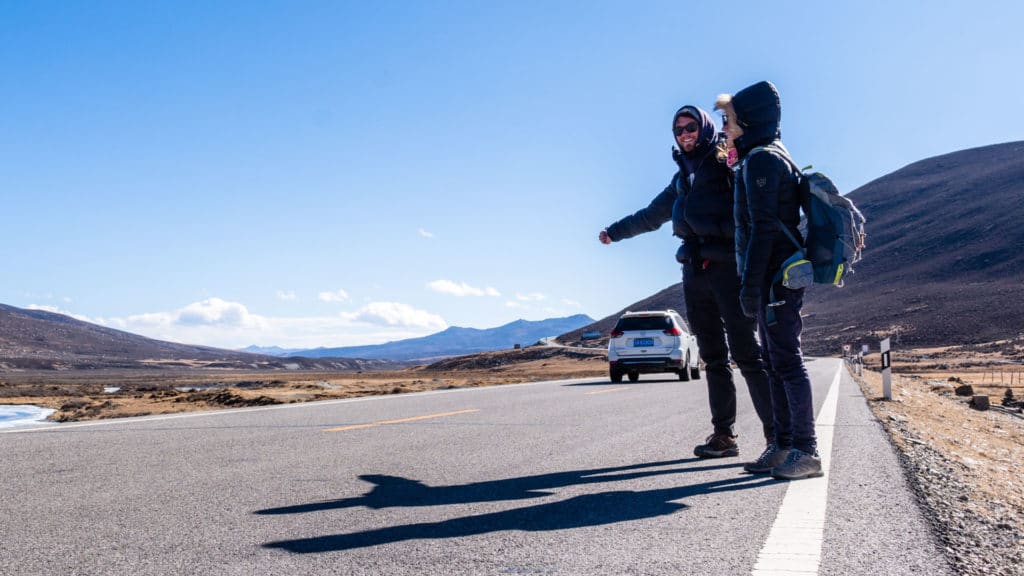Introduction: A Journey Beyond the Road
Hitchhiking, once a vibrant symbol of freedom and adventure, has faded from the modern travel landscape. In the 1960s and 70s, it was a rite of passage for many—a way to explore the world, meet strangers, and embrace the unpredictability of the open road. Today, safety concerns, societal shifts, and the rise of ride-sharing apps have all but relegated hitchhiking to nostalgia. Yet, its lessons of trust, resilience, and human connection remain profoundly relevant. This article dives into the history, risks, rewards, and enduring wisdom of hitchhiking, offering insights for modern travelers seeking meaning in their journeys.
The Golden Age of Hitchhiking
A Cultural Phenomenon
In its heyday, hitchhiking was more than a mode of transport; it was a cultural movement. From the Beat Generation to the hippie era, thumbing a ride symbolized rebellion against materialism and a quest for authentic experiences. Travelers like Jack Kerouac romanticized the road, weaving tales of serendipitous encounters and personal transformation.
Why It Thrived
Hitchhiking flourished in a time of relative trust and economic necessity. Post-World War II optimism, combined with limited access to personal vehicles, made it a practical choice for students, drifters, and adventurers. Roads were less regulated, and drivers were more likely to see a hitchhiker as a fellow traveler rather than a threat.
The Decline of Hitchhiking
Safety Concerns and Media Influence
By the 1980s, hitchhiking’s reputation took a hit. Sensationalized media reports of crimes involving hitchhikers or drivers fueled public fear. Studies, like one from the University of Melbourne, note that hitchhiking’s decline in Australia mirrored global trends, driven by heightened safety concerns and changing social attitudes.
The Rise of Alternatives
The advent of budget airlines, carpooling apps, and ride-sharing services like Uber offered safer, more reliable alternatives. Why risk the uncertainty of hitchhiking when you could book a ride with a tap? These technological shifts made hitchhiking seem outdated, even reckless, to a new generation.
The Risks of Hitchhiking
Real Dangers on the Road
Hitchhiking isn’t without risks. Stories of violence or exploitation, though rare, have left a lasting mark on its perception. A 2008 study highlighted that hitchhikers face vulnerabilities due to the lack of formal safety mechanisms, unlike modern ride-sharing platforms with driver ratings and GPS tracking.
Legal Restrictions
In many places, hitchhiking is now restricted or outright banned. For example, several U.S. states prohibit standing on highways to solicit rides, citing safety concerns for both hitchhikers and drivers. Always check local laws before attempting to hitchhike.
The Rewards of Hitchhiking
Unparalleled Human Connection
Despite the risks, hitchhiking offers unique rewards. It fosters raw, unfiltered interactions with strangers—something rare in today’s curated digital world. A hitchhiker might share a ride with a trucker sharing life stories or a family offering homemade snacks, creating bonds that linger long after the journey ends.
Freedom and Spontaneity
Hitchhiking embodies the spirit of unplanned adventure. Without schedules or tickets, travelers surrender to the road’s rhythm, embracing wherever it leads. This freedom can spark creativity and self-discovery, as noted by travelers in memoirs like On the Road.
What Hitchhiking Teaches Us Today
Trust in Strangers
Hitchhiking requires a leap of faith—trusting a stranger to offer a ride and respecting their generosity. In a world increasingly skeptical of others, this practice reminds us that kindness often outweighs suspicion. My own brief hitchhiking experience in rural New Zealand taught me this: a farmer picked me up, shared his life story, and even invited me for tea. That moment of trust left a lasting impression.
Resilience in Uncertainty
Hitchhiking teaches you to adapt. You might wait hours in the rain or end up in an unexpected town. This resilience translates to modern life, where flexibility in the face of uncertainty—whether in travel or career—remains a valuable skill.
Minimalism and Resourcefulness
Hitchhikers travel light, relying on wit and resourcefulness. This minimalist mindset challenges the overconsumption of modern travel, encouraging us to focus on experiences over possessions. Packing only essentials forces you to prioritize what truly matters.
Comparing Hitchhiking to Modern Travel Options
Hitchhiking vs. Ride-Sharing
| Aspect | Hitchhiking | Ride-Sharing (e.g., Uber) |
|---|---|---|
| Cost | Free or minimal (gas money offered) | Paid, often expensive |
| Safety | Higher risk, no formal vetting | Driver ratings, GPS tracking |
| Spontaneity | High, unpredictable destinations | Scheduled, app-controlled |
| Connection | Deep, personal interactions | Often transactional, brief |
Hitchhiking offers unmatched spontaneity and human connection, but ride-sharing provides safety and reliability. The choice depends on your priorities—adventure or security.
Hitchhiking vs. Public Transport
| Aspect | Hitchhiking | Public Transport |
|---|---|---|
| Cost | Free or minimal | Ticket costs vary |
| Flexibility | No fixed routes or schedules | Fixed routes and times |
| Accessibility | Depends on driver willingness | Widely available in urban areas |
| Experience | Unique, story-driven | Predictable, less personal |
Public transport is practical for city travel, but hitchhiking shines in rural areas where buses are scarce. It’s a trade-off between convenience and adventure.
Pros and Cons of Hitchhiking Today
Pros
- Cost-Effective: Virtually free, ideal for budget travelers.
- Authentic Connections: Meet diverse people and hear their stories.
- Environmental Impact: Reduces carbon footprint by sharing rides.
- Adventure: Embraces the unknown, fostering personal growth.
Cons
- Safety Risks: No vetting of drivers or passengers.
- Unreliability: Long waits or no rides in remote areas.
- Legal Issues: Prohibited in some regions, risking fines.
- Weather Exposure: Vulnerable to rain, heat, or cold while waiting.
How to Hitchhike Safely in 2025
Preparation Tips
Before hitting the road, research your route and local laws. Carry a map (digital or paper) and share your plans with a trusted friend. A recent post on X emphasized the importance of planning: “Hitchhiking isn’t dead, but it’s not a free-for-all. Know your route and stay sharp.”
Practical Safety Measures
- Choose Safe Spots: Stand in well-lit, visible areas with pull-over space.
- Trust Your Instincts: Decline rides if something feels off.
- Travel in Pairs: Especially for solo female travelers, a companion adds safety.
- Carry Essentials: Water, snacks, and a charged phone are non-negotiable.
Tools for Modern Hitchhikers
- Apps: Use apps like Hitchwiki for community tips and route planning.
- GPS Devices: A portable GPS tracker ensures you’re never truly lost.
- Communication: A cheap burner phone or satellite communicator for emergencies.
People Also Ask (PAA)
Is hitchhiking still safe in 2025?
Hitchhiking carries risks, but with precautions like traveling in pairs and choosing safe spots, you can minimize dangers. Always trust your instincts and stay updated on local laws.
Why did hitchhiking decline?
Hitchhiking waned due to safety fears, media sensationalism, and the rise of alternatives like ride-sharing and budget airlines. Cultural shifts toward individualism also played a role.
Can you hitchhike legally?
Laws vary by region. In the U.S., some states ban hitchhiking on highways, while countries like New Zealand are more lenient. Check local regulations before starting.
What are the benefits of hitchhiking?
Hitchhiking fosters human connection, encourages minimalism, and offers a low-cost, eco-friendly way to travel. It’s a unique way to embrace spontaneity and resilience.
Stories from the Road: Real Hitchhiking Experiences
The Kindness of Strangers
In 2019, I hitched a ride in Ireland after missing a bus. A retired schoolteacher picked me up, shared tales of her childhood in Galway, and dropped me at a cozy pub. That 30-minute ride felt like a masterclass in Irish history—and human kindness.
A Lesson in Patience
A friend once spent six hours waiting for a ride in rural Montana. Just as he gave up, a rancher pulled over, offering not just a lift but a home-cooked meal. The wait tested his patience, but the reward was a story he still tells.
Hitchhiking’s Global Variations
Poland’s Unique Tradition
In Poland, hitchhiking (autostop) has a distinct cultural history, often seen as a social experiment in trust. A 2025 study noted its role in fostering community, contrasting with Western individualism.
Hitchhiking in Developing Nations
In countries like India or Morocco, hitchhiking remains common, especially in rural areas. Locals often pick up travelers out of hospitality, though language barriers can add a layer of challenge.
Bringing Hitchhiking’s Spirit to Modern Travel
Incorporate Spontaneity
You don’t need to hitchhike to embrace its ethos. Book a trip with no itinerary, say yes to a stranger’s invite for coffee, or take a detour just because. Small acts of spontaneity keep the spirit alive.
Prioritize Connection
Use platforms like Couchsurfing or Meetup to connect with locals. These modern tools echo hitchhiking’s focus on authentic, human interactions without the road’s risks.
Travel Light
Adopt a hitchhiker’s minimalist mindset. Pack only what you need, and focus on experiences over souvenirs. This approach saves money and deepens your connection to the journey.
FAQ Section
Is hitchhiking illegal in the United States?
Hitchhiking laws vary by state. Some, like California, allow it in designated areas, while others, like Nevada, prohibit it on highways. Always research local regulations first.
What’s the best way to start hitchhiking?
Begin with short, safe routes in friendly areas. Use resources like Hitchwiki, travel with a friend, and carry essentials like water and a phone. Trust your instincts always.
Can women hitchhike safely?
Women can hitchhike safely with precautions like traveling in pairs, choosing well-lit spots, and declining uncomfortable rides. Many female hitchhikers report empowering experiences when done thoughtfully.
How does hitchhiking compare to ride-sharing apps?
Hitchhiking is free and spontaneous but riskier, while ride-sharing apps offer safety and convenience at a cost. Hitchhiking fosters deeper connections; ride-sharing is more transactional.
Does hitchhiking still exist in 2025?
Yes, though less common, hitchhiking persists in niche communities and rural areas. Online forums and apps like Hitchwiki keep the practice alive for adventurous travelers.
Conclusion: The Road Still Calls
Hitchhiking may no longer be the travel mode of choice, but its lessons endure. It teaches us to trust, adapt, and find joy in the unexpected. Whether you thumb a ride or simply adopt its spirit, hitchhiking reminds us that the journey matters as much as the destination. So, next time you travel, leave room for serendipity—you might just find a story worth telling.




